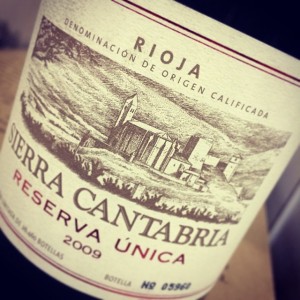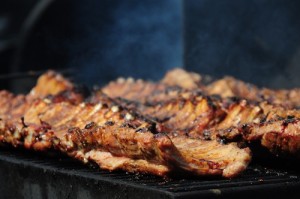Tempranillo: an education

As Spring starts a slow crawl towards reality here in Minnesota (the winter of 2013-2014 was the harshest of the last generation) our thoughts can’t help but turn to the idea of grilled food, cooking away on our charcoal grill on the company patio.
We do like popping corks around here at The Wine Company, which of course means we have ample opportunity to taste lots of different grapes with many different foods. After years of experimentation involving thousands of bottles of wine, we can definitively state that Tempranillo might be the best wine for charcoal grilled food.
That’s a big statement, so before we talk about why here are five things you might not know about the Tempranillo grape:
1) Old tempranillo vines have been found in Italy. In parts of Basilicata in particular, some vines that were being identified by wineries as Malvasia Nera are, in fact, Tempranillo. “In Italy, DNA profiling has surprisingly revealed that Tempranillo has traditionally been cultivated in Toscana and Basilicata under the misleading names Malvasia Nera di Basilicata and Malvasia Nera di Lecce,” remarks Jancis Robinson in Wine Grapes.
2) Some of the other names Tempranillo goes by include: Aragon, Cencibel, Chinchillana, Negra de Mesa, Santo Stefano (in Pisa, Italy), Tinta del Pais, Tinta do Toro, Tinta Madrid, Tinta Roriz, Tinto Fino, Valdepenas, Veridell, and Vid de Aranda are just part of the list. The range of synonyms for the grape shows that it’s an old varietal, carried from region to region for millennia and adopted by local communities that renamed it to call it their own.
3) Some countries that you might be surprised to learn have Tempranillo plantings: Australia (951 acres!),Switzerland, Malta, Turkey (17 acres), and New Zealand (17 acres).
4) The basis for the name Tempranillo is the Spanish word “Temprano” which means “early,” referring to the early ripening of the Tempranillo grape.
5) White Tempranillo exists. A white skinned mutant of Tempranillo was isolated in the early 2000’s and authorized for use in white Rioja in 2004. Higher in alcohol, the wines produced by 100% white Tempranillo are reminiscent of Viognier.
Be sure to also check out our post on Rioja: Five things you might not know.
So what about this grilled food and Tempranillo pairing thing?
Tempranillo has a few things going for it when you’re talking about pairing with grilled foods (and by “grilled foods” we mean food cooked on an open fire or charcoal fire … full of smoke and richness).
First, it’s usually lower in alcohol than the likes of Zinfandel, Grenache, and Mourvedre. This results in more balance overall when it comes to tasting the nuance and detail of the meat.
However, Tempranillo is also chock full of spicy elements that play very well with the array of spices we put on our burgers and steaks. Garlic? Yep. Paprika? For sure. A blue cheese stuffed Jucy Lucy? You betcha. Aromas of strawberry, worn leather, spice box, dried tobacco, and cherry compote can often be found in the best Tempranillos.
Lastly, because of Tempranillo’s affinity for playing well with oak, you end up with a wine that has nuance, detail, elegance, and beauty but also power, presence, and attitude. It’s the best of all worlds in many ways, and because of this chameleon – like personality it can shape shift around a wide variety of goodies off the grill.
Now that you’re salivating, here’s a fine line up of good recipes for you to plan your Tempranillo drinking around:
From local food writer Keane Amdahl comes Simple Steak Fajitas with Sweet and Sour Peppers.
From Alma chef/owner Alex Roberts (contributed by him anyway) comes Pork Shoulder Roast with Citrus Mojo and Green Sauce.
From Lenny Russo of Heartland here’s some Grilled Bison Tenderloin. Enjoy! Pop some Tempranillo!








